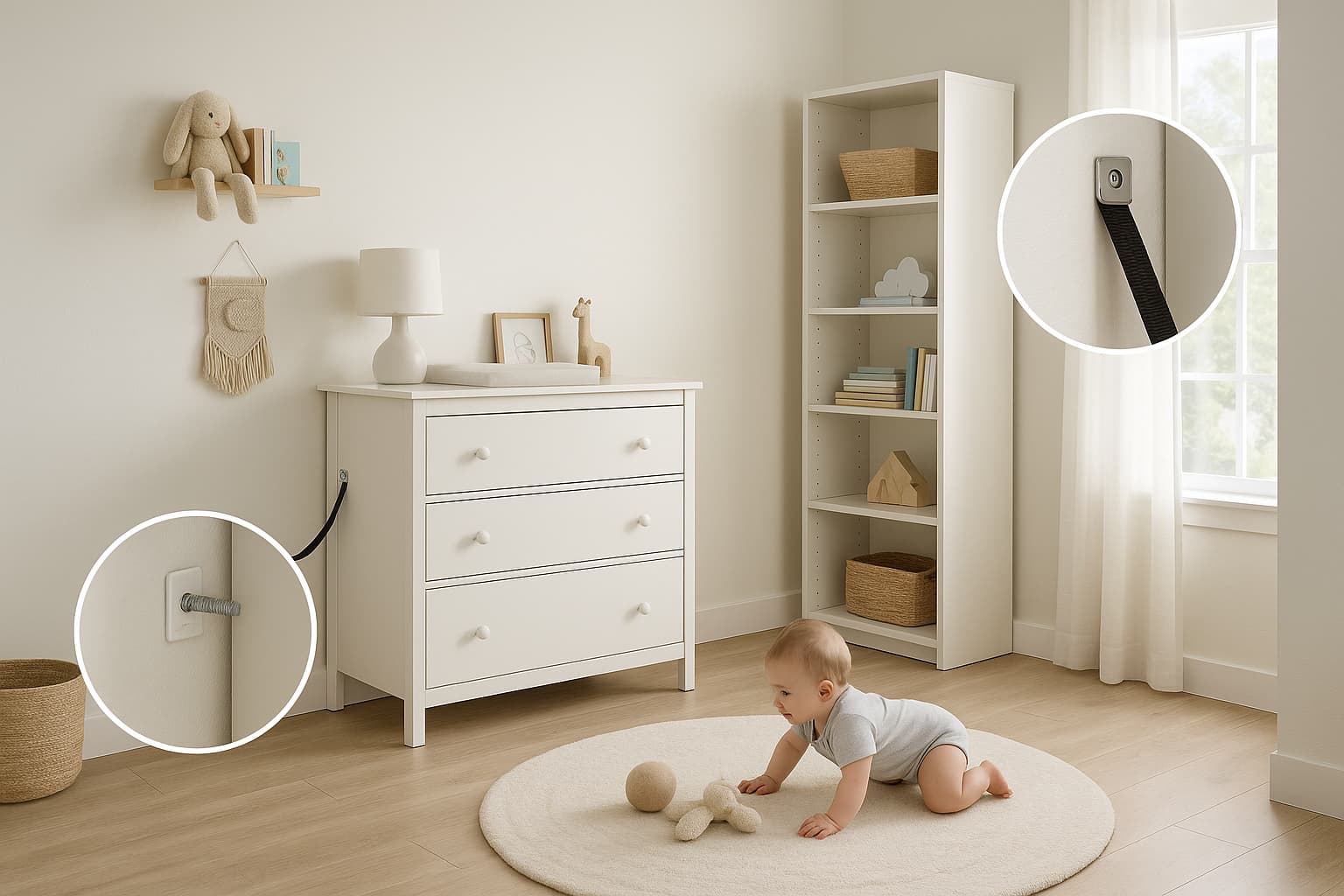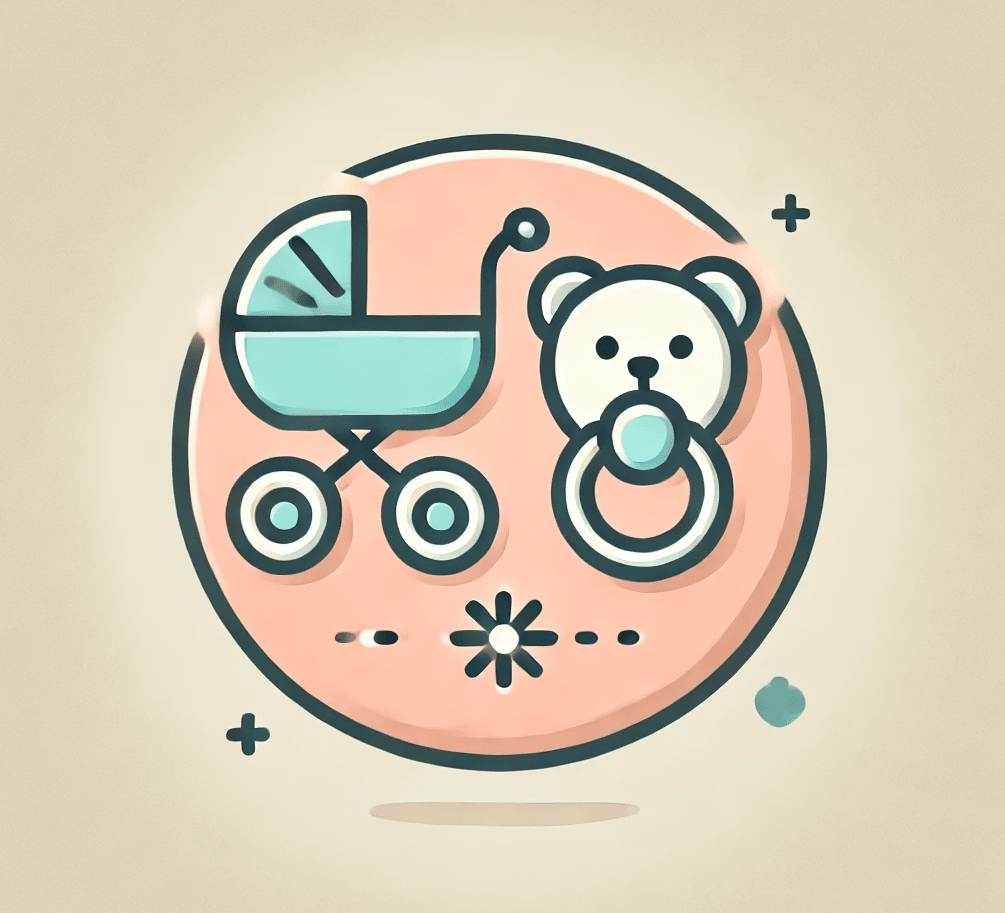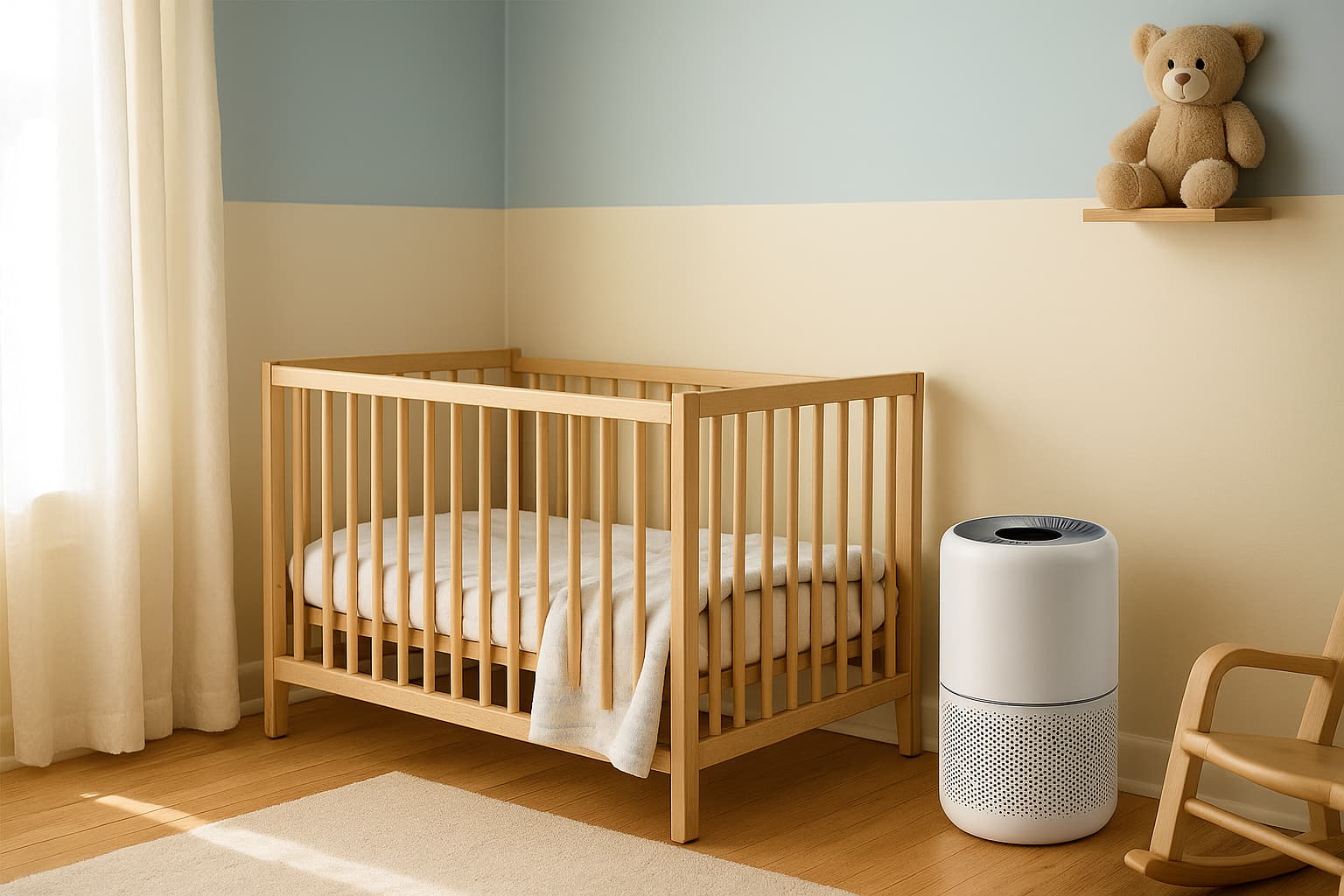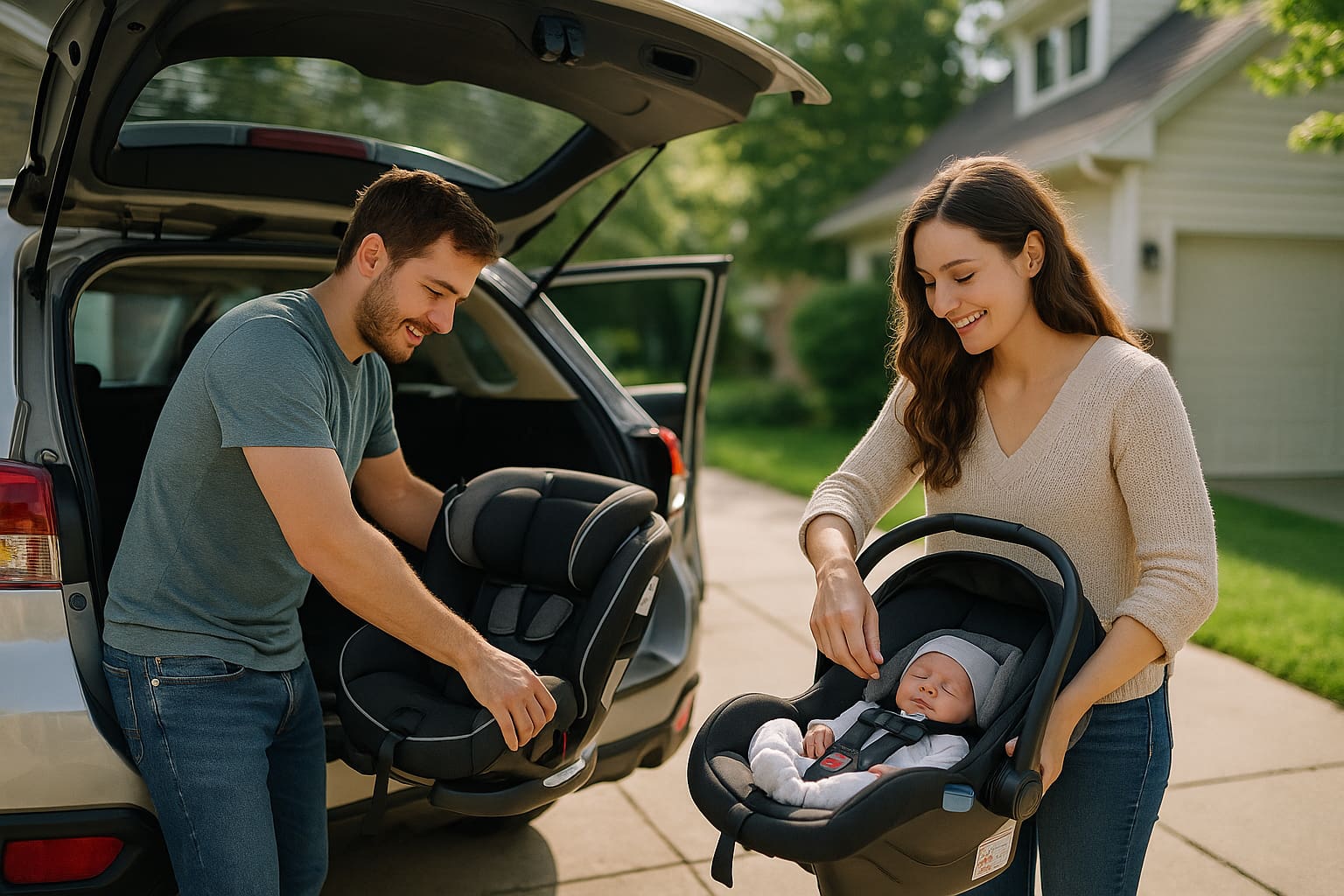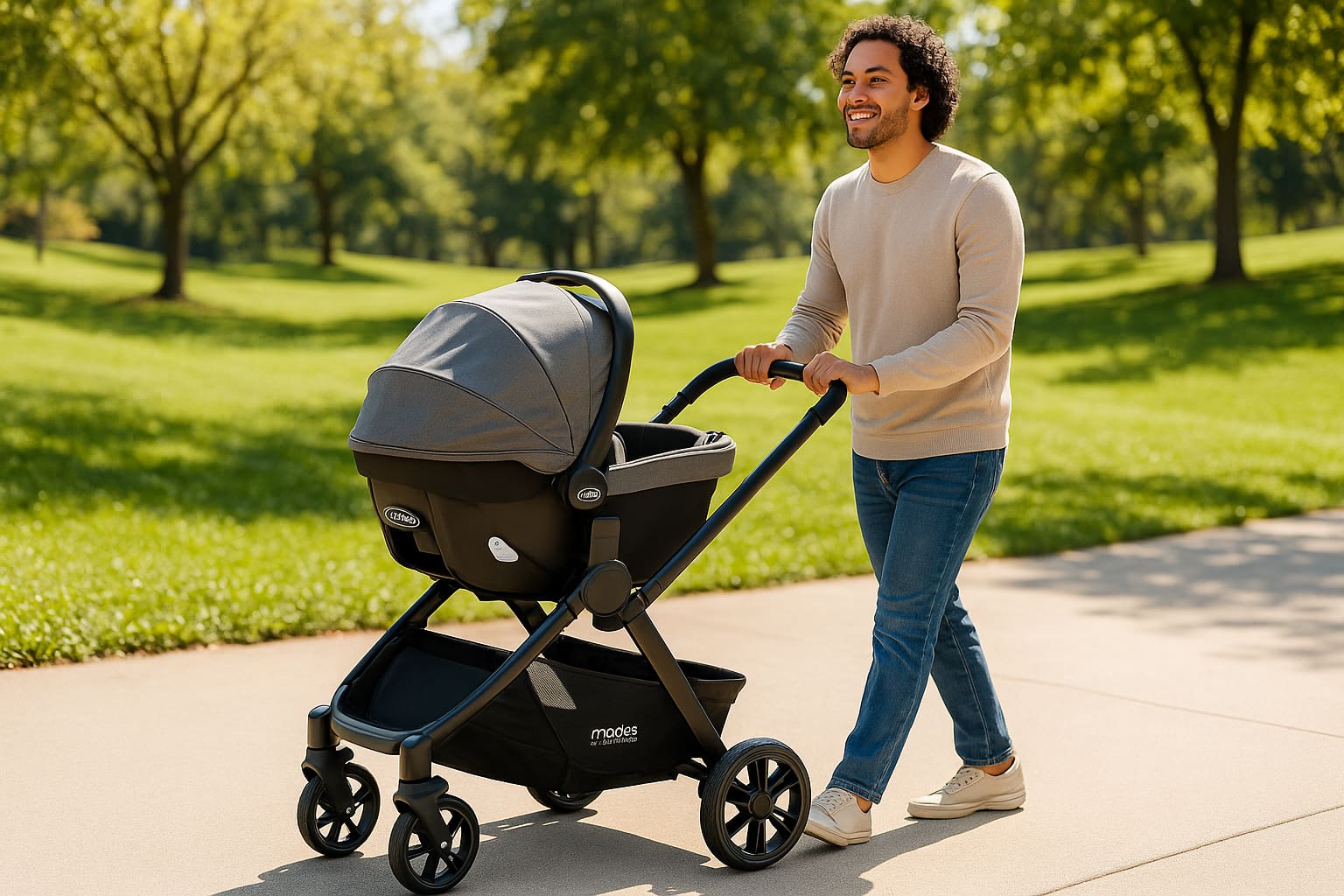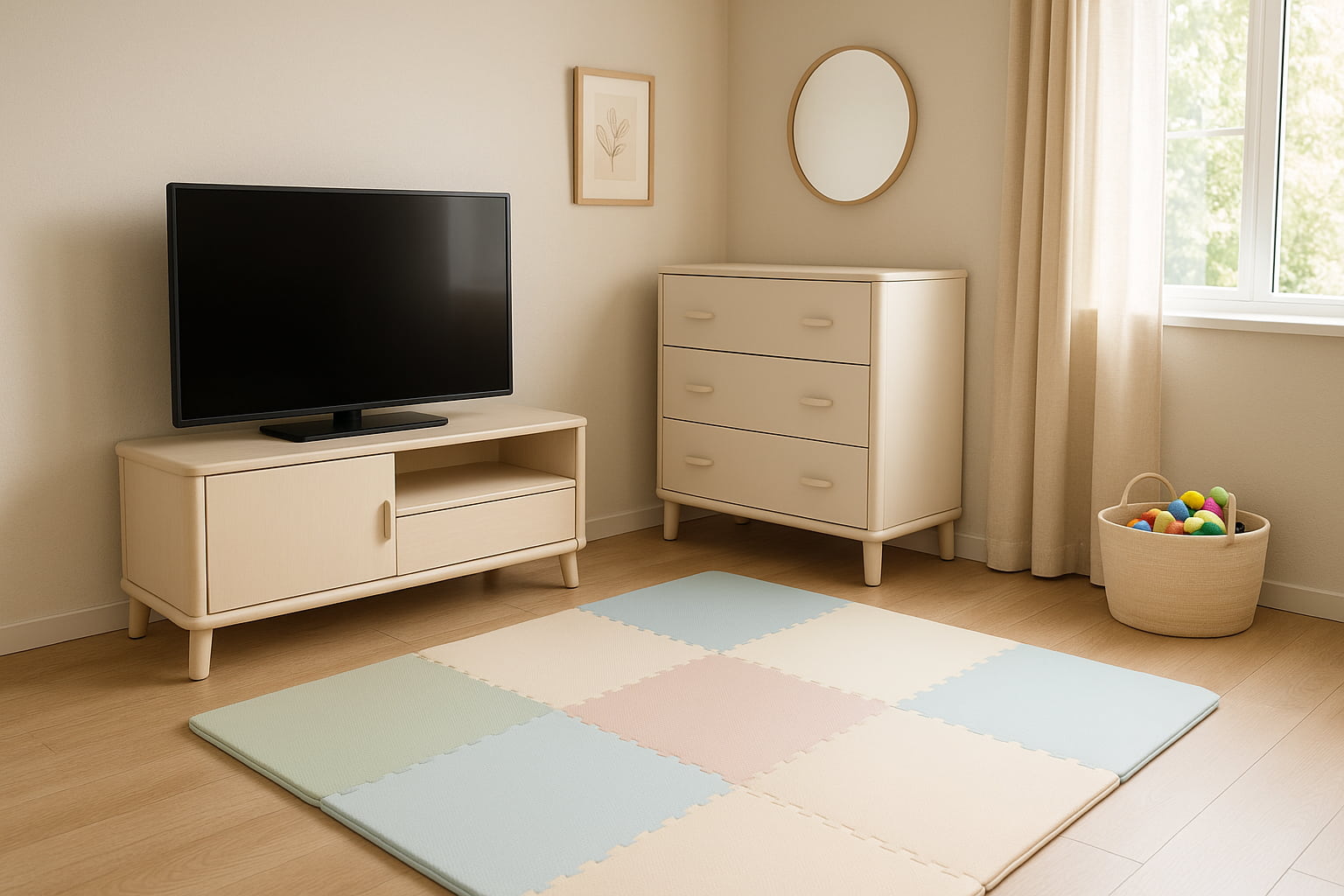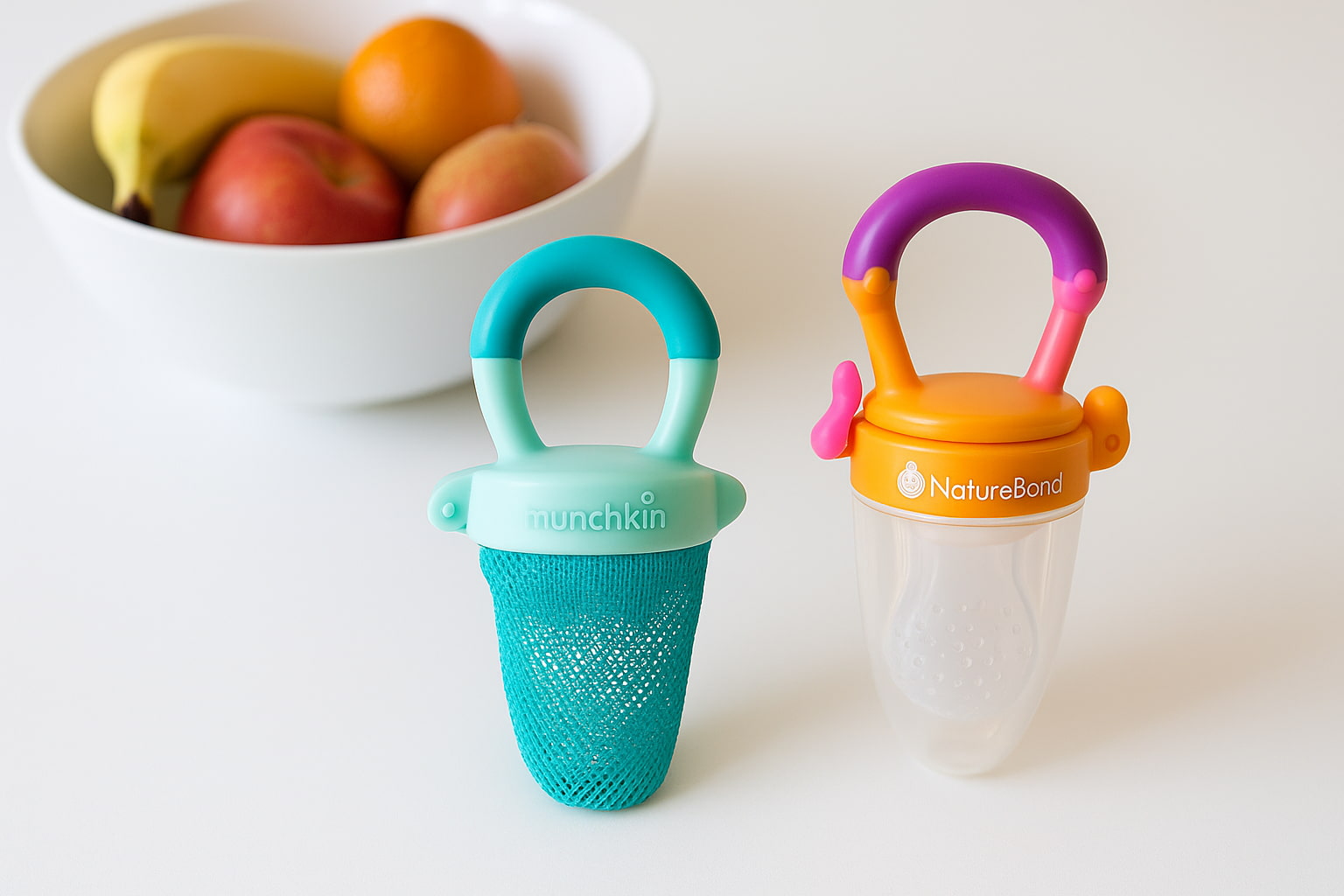When babies start crawling and climbing, your home can turn into a maze of hidden dangers. One of the biggest risks? Unsecured furniture. From tall bookshelves to changing tables, anything that tips can become a serious hazard.
That’s why it’s so important to anchor furniture for baby safety, and the good news is, it’s easier than you might think. With the right anchors, wall straps, and no-drill options, you can stop wobbly furniture from ever becoming a threat.
In this guide, we’ll show you what furniture needs to be anchored. Then we’ll walk you through simple, trusted ways to do it, just like safety experts and real parents recommend. You’ll also learn which tools to use, how wall type matters, and which common mistakes to avoid.
Whether you’re babyproofing a nursery or the whole house, this is the no-fluff, trusted guide to keep your child safer and give you real peace of mind. Let’s start with what’s really at risk.
🚼 Why Unanchored Furniture Is a Serious Risk to Babies
Babies don’t just explore with their hands; they climb, grab, and pull on whatever’s nearby. Tall furniture like bookshelves, dressers, and changing tables can tip easily. That makes them a serious hazards around babies.
Even small toddlers have enough strength to topple lightweight furniture if it’s not anchored to the wall. And since many items are top-heavy when drawers are open or shelves are full, accidents can happen in seconds, even during supervised play.
The scariest part? Most tip-over injuries happen at home, in everyday rooms like nurseries and living areas.
That’s why anchoring furniture is a safety step you can’t skip. It’s simple, affordable, and could prevent one of the most common and dangerous types of injuries during early childhood.
📈 The Real Danger Behind Furniture Tip-Overs
According to the U.S. Consumer Product Safety Commission, a child is injured every 33 minutes by a falling piece of furniture or a TV.
🧩 What Types of Furniture Must Be Anchored (And What’s Optional)
Not all furniture is equally risky, but it only takes one tipping piece to cause serious harm.
Tall and heavy items are top priority. These often have a high center of gravity and can fall fast if a baby climbs or leans.
Always anchor these:
🧸 Dressers and chests with drawers
📚 Tall bookshelves or standing cabinets
🧺 Changing tables with under-storage
🎮 TV stands and entertainment centers
They’re front-heavy, and drawers or screens make them tip more easily.
Can skip anchoring:
🪞 Low benches or ottomans
🎨 Lightweight toy bins or craft tables
🪟 Wall-mounted cabinets are already screwed in
Look at how easy it is to wobble or shift; if it moves, anchor it.
🪑 Want a full checklist of what to secure before your baby starts crawling? Our Living Room Furniture Babyproofing Checklist makes it easy to spot hidden risks before they happen.
🧰 How Anti-Tip Kits Actually Work (And Why Many Parents Use Them Wrong)
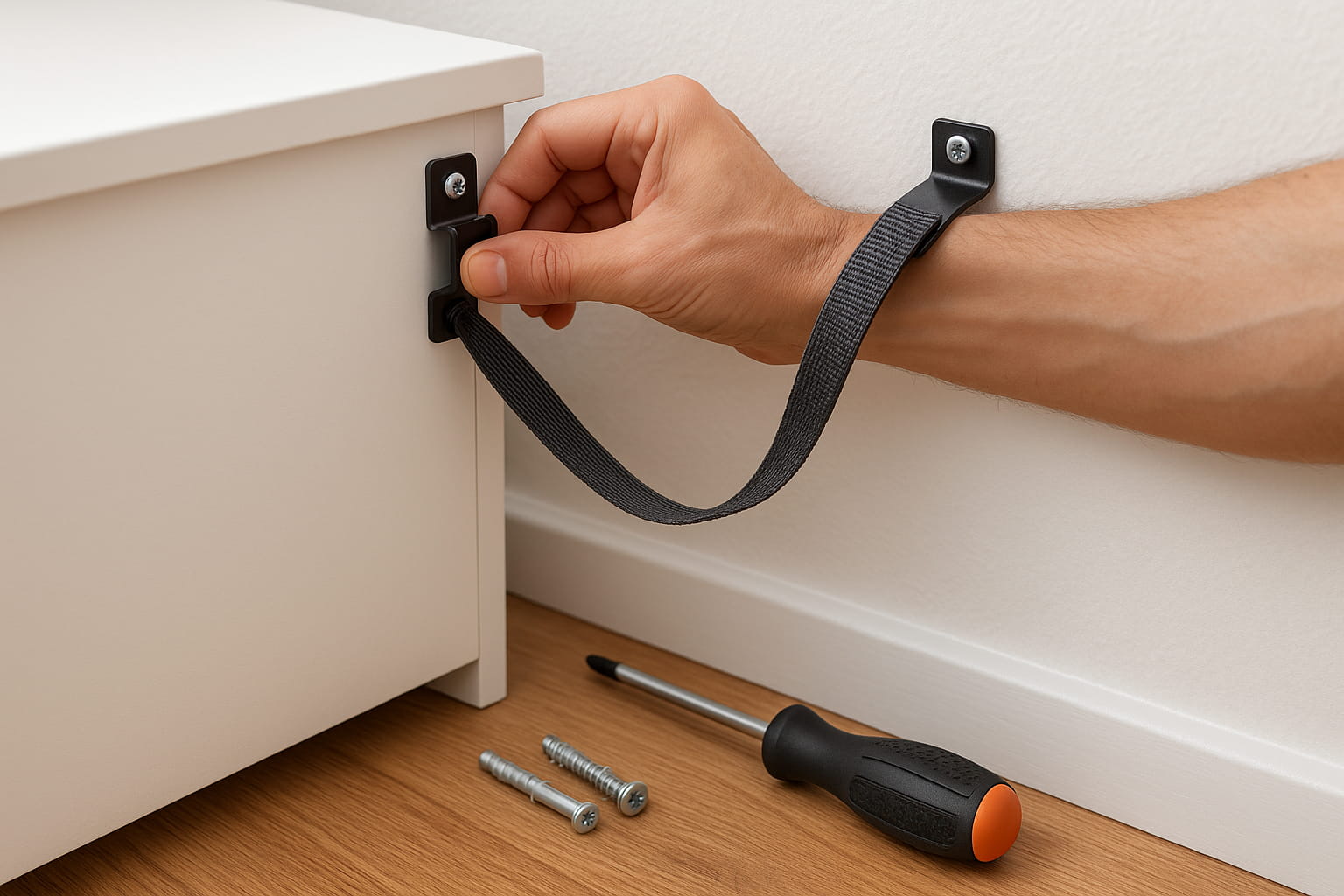
Anti-tip kits are simple but powerful tools that keep furniture from falling if a child pulls or climbs on it. Most kits include two brackets, one for the wall and one for the furniture, plus a strong strap to connect them.
You’ll find a few common types:
🔩 Wall straps (fabric or steel)
🧱 L-brackets that screw into studs
🪛 Stud anchors with toggle bolts for hollow walls
But many parents install them incorrectly.
❌ Screws are too short or only go into drywall
❌ Straps aren’t tightened after setup
❌ Anchors are placed too low or off-center
These small mistakes reduce the kit’s strength. Even a great product won’t work if it’s not installed right. Always follow instructions carefully and double-check your wall type before anchoring.
🔧 DIY Anchoring Vs Professional Installation: Which One’s Safer?
Most parents use DIY anti-tip kits, and for good reason. They’re budget-friendly, quick to install, and work well for basic drywall setups. If you’re comfortable using a drill and level, you can anchor dressers, bookshelves, and more in under 30 minutes.
DIY Pros:
✅ Affordable and widely available
✅ Easy to follow with basic tools
✅ Ideal for drywall or wood stud walls
DIY Cons:
❌ Risk of improper placement
❌ Limited for heavy or awkward furniture
❌ Doesn’t work well with brick or concrete
In those tougher cases, especially masonry or rental walls, hiring a pro makes sense. They’ll use the right tools and anchors, reducing your risk of a faulty setup. Safety isn’t just about effort; it’s about doing it right the first time.
🛠️ The Best Wall Types For Anchoring (Drywall, Plaster, Brick)
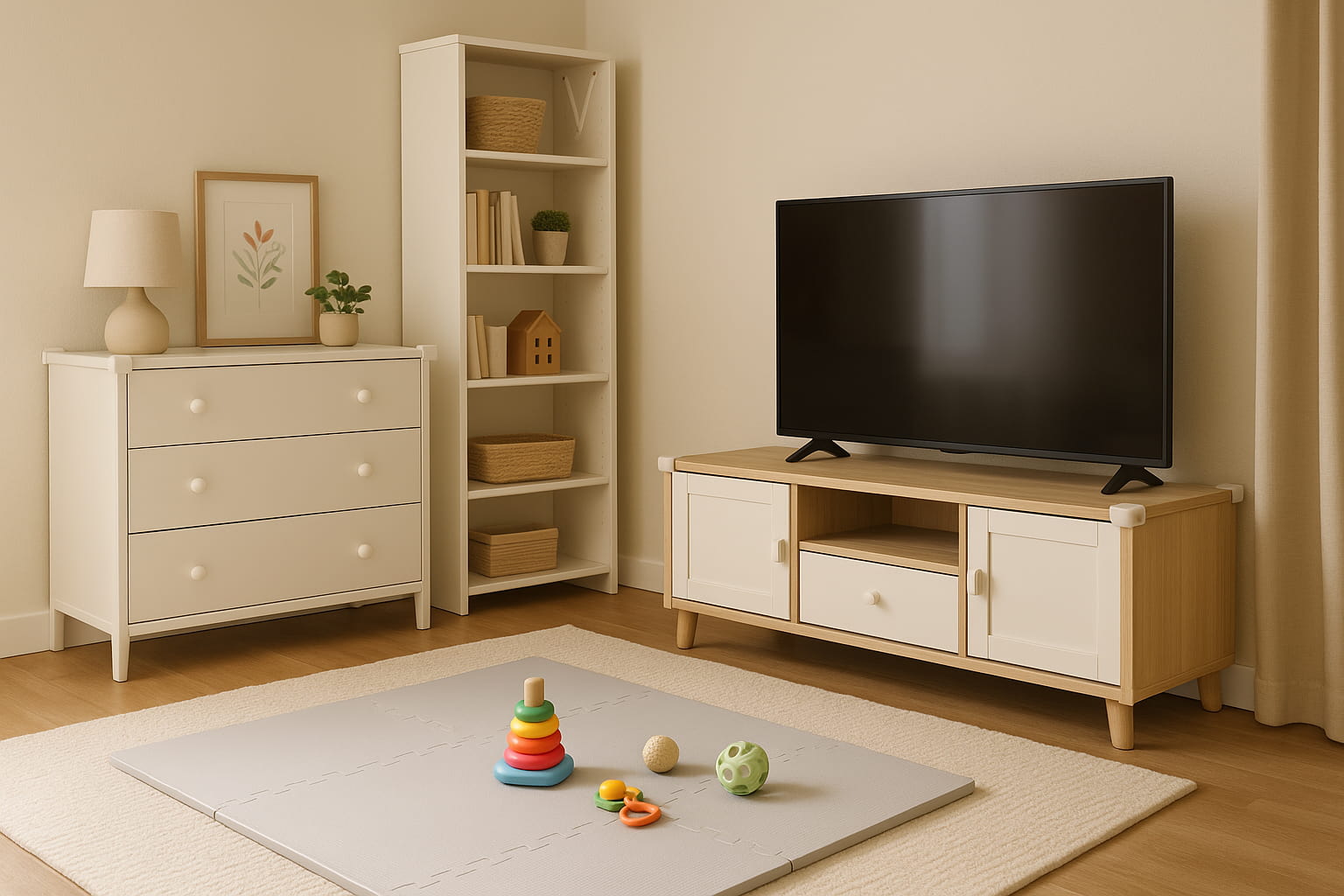
Not all walls hold anchors the same way, and using the wrong setup can make your safety gear useless. The best results come when you match your anchor type to your wall surface.
🧱 Drywall is the most common and easiest to work with. Use screw-in anti-tip kits that hit a wood stud for a strong hold. If no stud is available, use a heavy-duty drywall anchor.
🏚️ Plaster walls are trickier. They often crumble if drilled carelessly. Use toggle bolts or consult a pro for the best results.
🧱 Brick or concrete walls need masonry screws and special drill bits. Never use basic wall kits here; they won’t grip properly.
❌ Adhesive-only anchors are not recommended for any heavy furniture. They can peel off, especially on textured or dusty surfaces.
🪛 What Tools You’ll Need To Anchor Furniture The Right Way
You don’t need fancy gear to secure your furniture, just a few basics most households already have. But missing even one can make your anchoring job unsafe or incomplete.
Here’s what you’ll need:
🔩 Stud finder – to locate solid anchor points in the wall
🛠️ Drill and wall plugs – to safely insert screws into drywall or plaster
📏 Measuring tape – to line up brackets correctly and avoid crooked installs
🪚 Brackets or anti-tip kits – choose kits designed for your furniture type
Double-check that your tools match your wall type and kit instructions. A secure anchor is all about precision, not force.
🛋️ Babyproofing without drilling holes? Check out our renter-friendly guide, How to Babyproof Furniture Without Damage in 2025, for safe options that landlords won’t complain about.
🧱 Why Heavy Furniture Doesn’t Mean Safe Furniture
Many parents assume heavy furniture is safe simply because it feels too big to move. But that’s a dangerous myth. In reality, even large dressers or bookcases can fall with just a small tug or a climbing attempt.
Babies and toddlers often use furniture to pull themselves up. When they do, the weight shifts forward, and if it’s not anchored, it can tip in seconds.
Freestanding items like tall shelves or TV units are especially risky. They’re not attached to the wall, which means even their weight can’t save them during a tip-over.
The truth? Heavier furniture needs anchoring just as much, sometimes even more.
📉 Many parents miss this: 7 Must-Know Facts About Freestanding vs Mounted Furniture Safety reveals the hidden tipping risks and how to prevent them smartly.
🧒 When Babies Start Climbing (And Why Anchors Should Be Installed Before That)
Most babies begin pulling up to stand around 8 to 10 months. Shortly after, they start cruising, holding onto furniture while walking. Climbing often follows soon, especially once they gain confidence and leg strength.
This means your baby could try climbing before their first birthday.
Anchoring furniture after these milestones is risky. Tip-overs can happen suddenly, often before you even realize your child is strong enough to cause one.
Anchors should be installed early, ideally when your baby starts crawling. This gives you a safety buffer and keeps your home secure as your child becomes more mobile.
Waiting until they climb is waiting too long. Early anchoring is simple, affordable, and one of the most effective ways to prevent serious injuries.
🔎 How to Check If Your Anchor Is Still Holding Over Time
Anchoring furniture once isn’t a one-and-done safety measure. Over time, screws can loosen, adhesive can weaken, and wall anchors may shift, especially if your child pulls or climbs often.
To keep things secure, do a quick monthly check:
👀 Look for gaps between the wall and furniture
🛠️ Gently pull the top to feel for looseness
🔩 Check screws for rust, cracks, or wobble
🧱 Inspect wall material for damage (especially in drywall)
Also, recheck everything after big moves, deep cleaning, or furniture rearranging.
It only takes a few minutes, but it can prevent major injuries. Think of it like checking smoke alarms, a small habit with, big impact. Rechecking keeps your anchors reliable and your baby safer.
📌 Final Verdict: Why Every Nursery and Living Room Needs Anchoring
Anchoring isn’t an extra step. It’s a must. The biggest mistake parents make is assuming heavy furniture is stable enough on its own. But when babies start climbing, even a sturdy dresser can become a hazard.
We’ve seen how anti-tip kits, the right tools, and smart placement can turn an ordinary setup into a safe zone. You don’t need fancy tools or hours of time, just a plan, some anchors, and a mindset that values prevention.
Whether you live in a rented apartment or your forever home, knowing how to anchor furniture for baby safety gives peace of mind. You won’t be second-guessing every wobble or bump.
Anchoring creates a safe space where your baby can explore without danger. And at the end of the day, that’s what babyproofing is really about.
🧸 Still comparing gear? Our Top Furniture Babyproofing Brands Compared (2025) breaks down the safest choices across all budgets, so you can anchor smart without overspending.
❓ FAQs About How to Anchor Furniture for Baby Safety
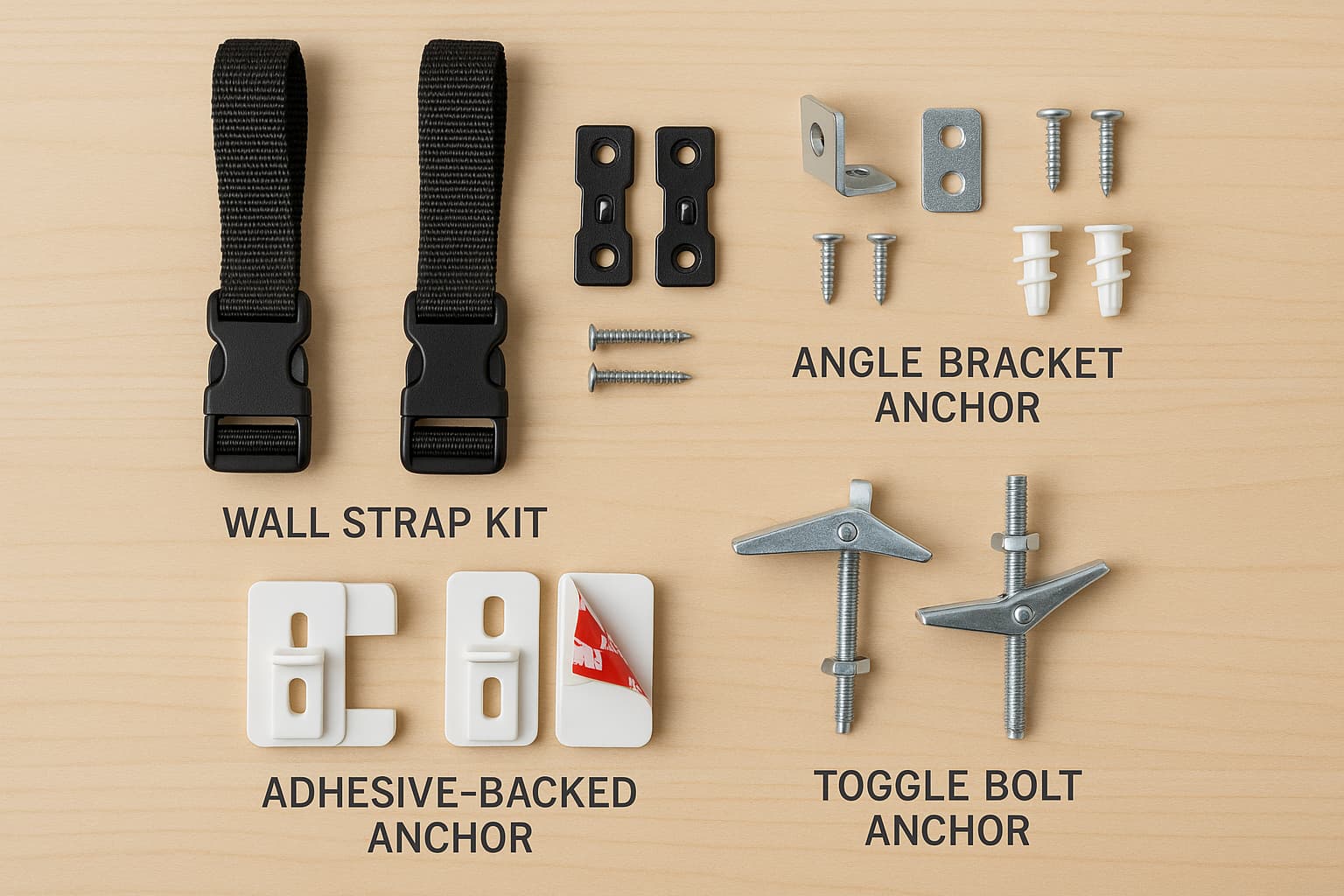
If you’re still wondering whether it’s really necessary to anchor furniture for baby safety, you’re not alone. Here are some of the most common concerns parents (and renters) ask, answered clearly and confidently.
Do I need to anchor furniture even if I don’t have kids yet?
Yes. Furniture anchors aren’t just for parents; they’re a smart safety move for pet owners, future-proofing, or even earthquake zones. It’s always better to be prepared.
What happens if I can’t drill because I rent my house?
Try no-drill kits with heavy-duty adhesive strips. Just check your lease first and remove them gently when moving out.
Can adhesive anchors alone stop a full dresser from tipping?
For light furniture, maybe. But for dressers and bookshelves, stud-mounted brackets are far safer.
Are there anchor kits that work without studs?
Yes, some kits include drywall anchors or toggle bolts, perfect for hollow walls without studs.
🧾Disclaimer
This article is for educational purposes only and does not replace medical or safety expert consultation. Always follow the manufacturer’s guidelines for installation.
✍️ Writer Byline
Written by Find For Baby, your trusted source for evidence-based parenting safety advice.
